March 24, 2015
Martha O'Kennon
Spring continues to happen every few days. A chill breeze punctuated by a sun that warms pond ice, the workshop and my heart.
Click on any picture to enlarge it. Click again to REALLY enlarge it.
A couple of days ago, when the sun warmed the aconites, the honeybees were back. One of them was blackish. I read via Google
that black ones do show up every now and then in a regular honeybee hive. It was the exact size and shape of the honeybees, just with a
touch of black. Speaking of black animals, the two little black fish from last year's brood are getting oranger and oranger.
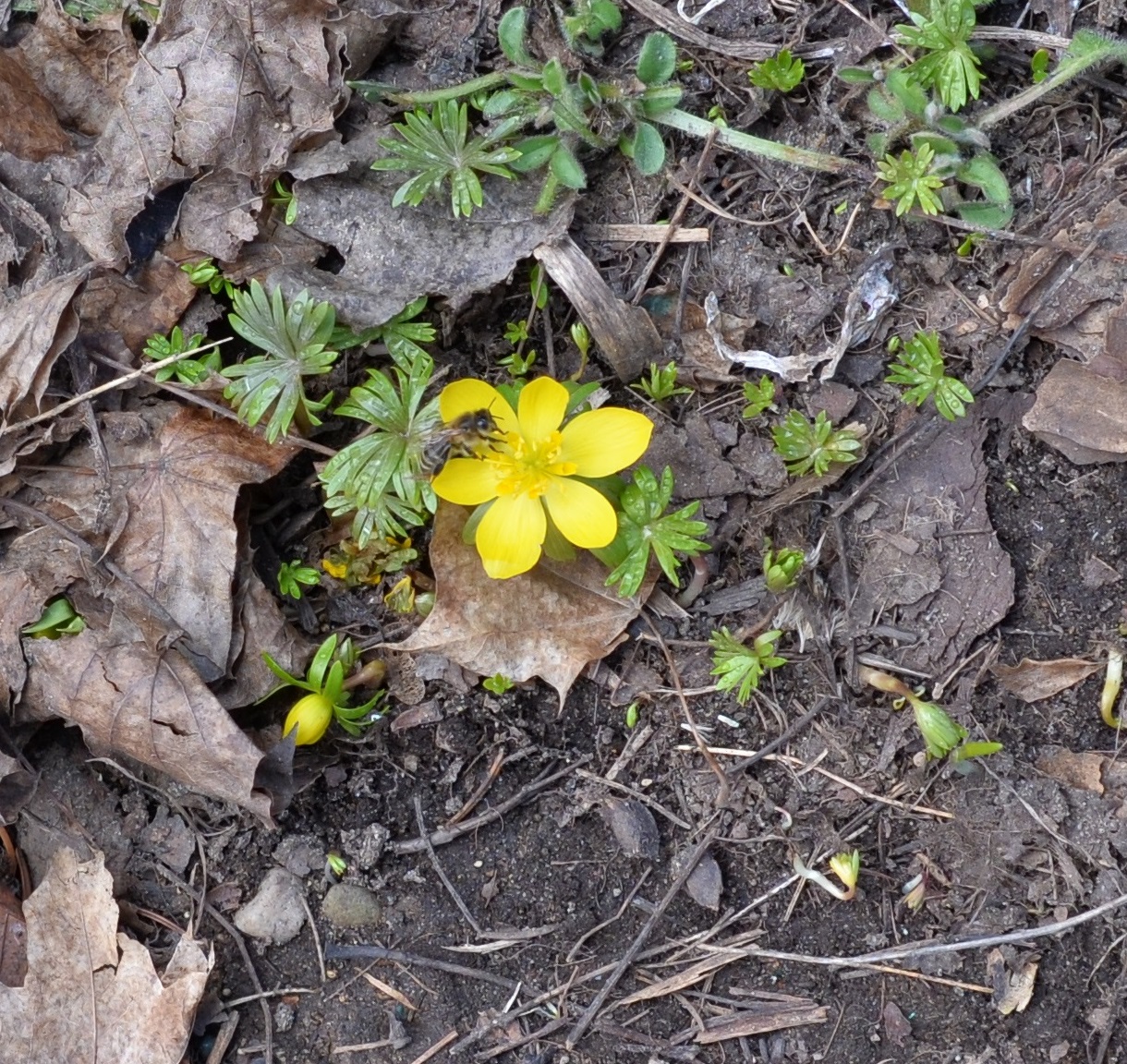
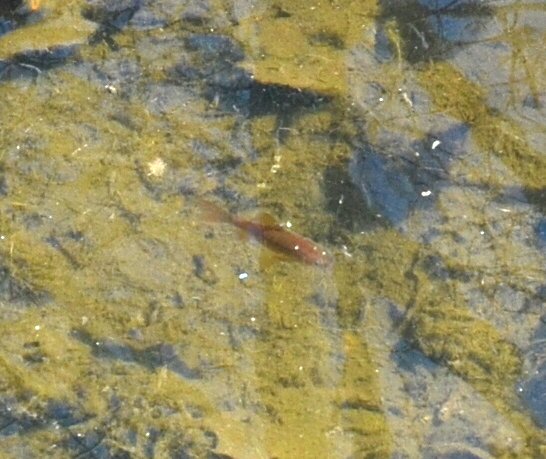
Every night the temperature goes below freezing. Here is the crackling pattern on the top of the pond water as the ice
begins to form.
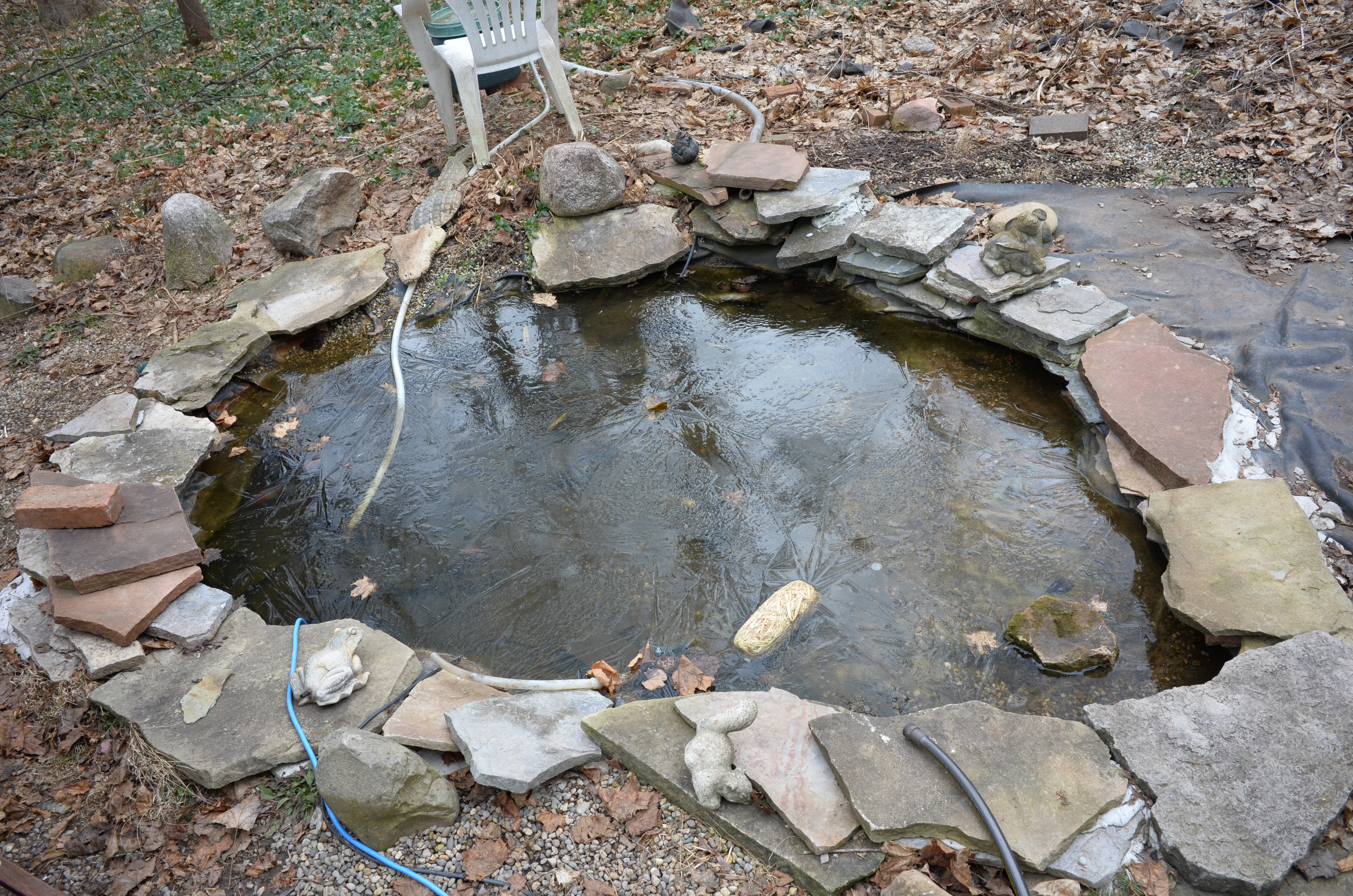
The beautiful purple crocus opened up today. This is one my neighbor gave me some of years ago and it
has bloomed and spread wonderfully. And today the white hellebore buds began to open. The leaves persist
all winter but after the flowers are finished, the old leaves drop off and new ones appear.
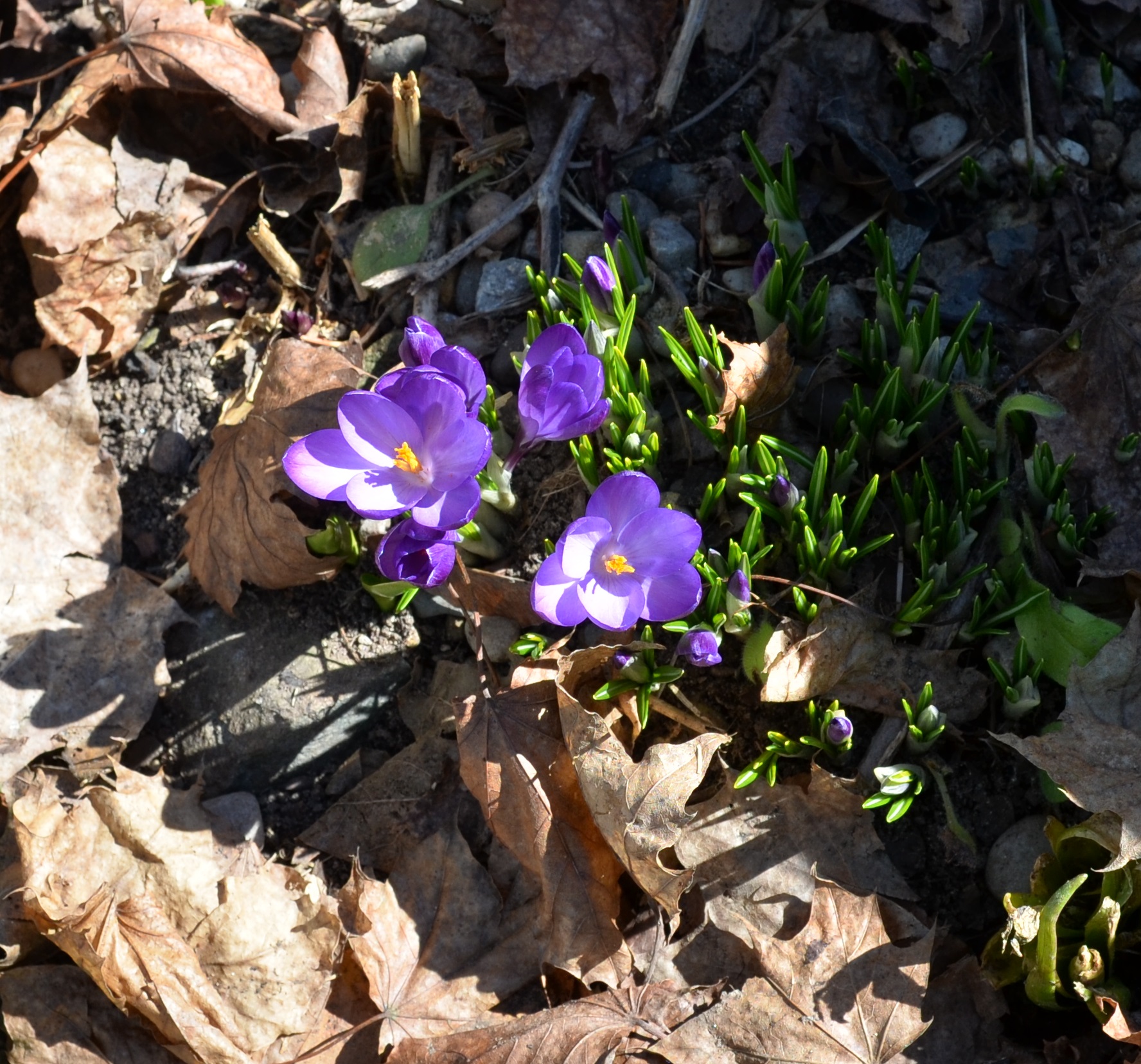
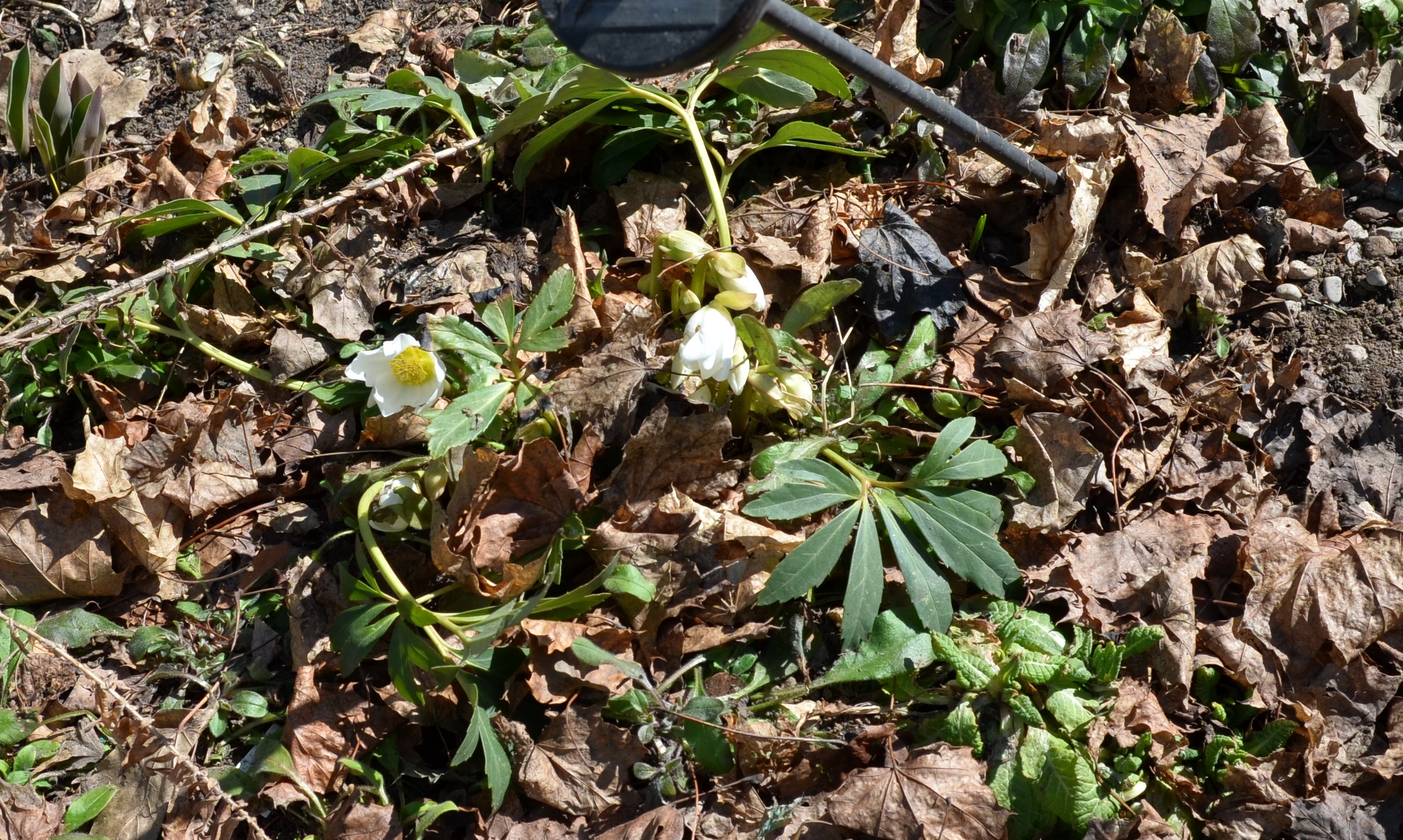
Take a good look at this photo of my red rhododendron beside the house in the front yard.
Why are the higher buds and leaves brownish? I don't suppose you remember the thick ice crust we had on top of
a deep snow layer? Well, the browned leaves and buds were exposed above the ice while the stuff under the ice
was protected from the bitter cold patch.
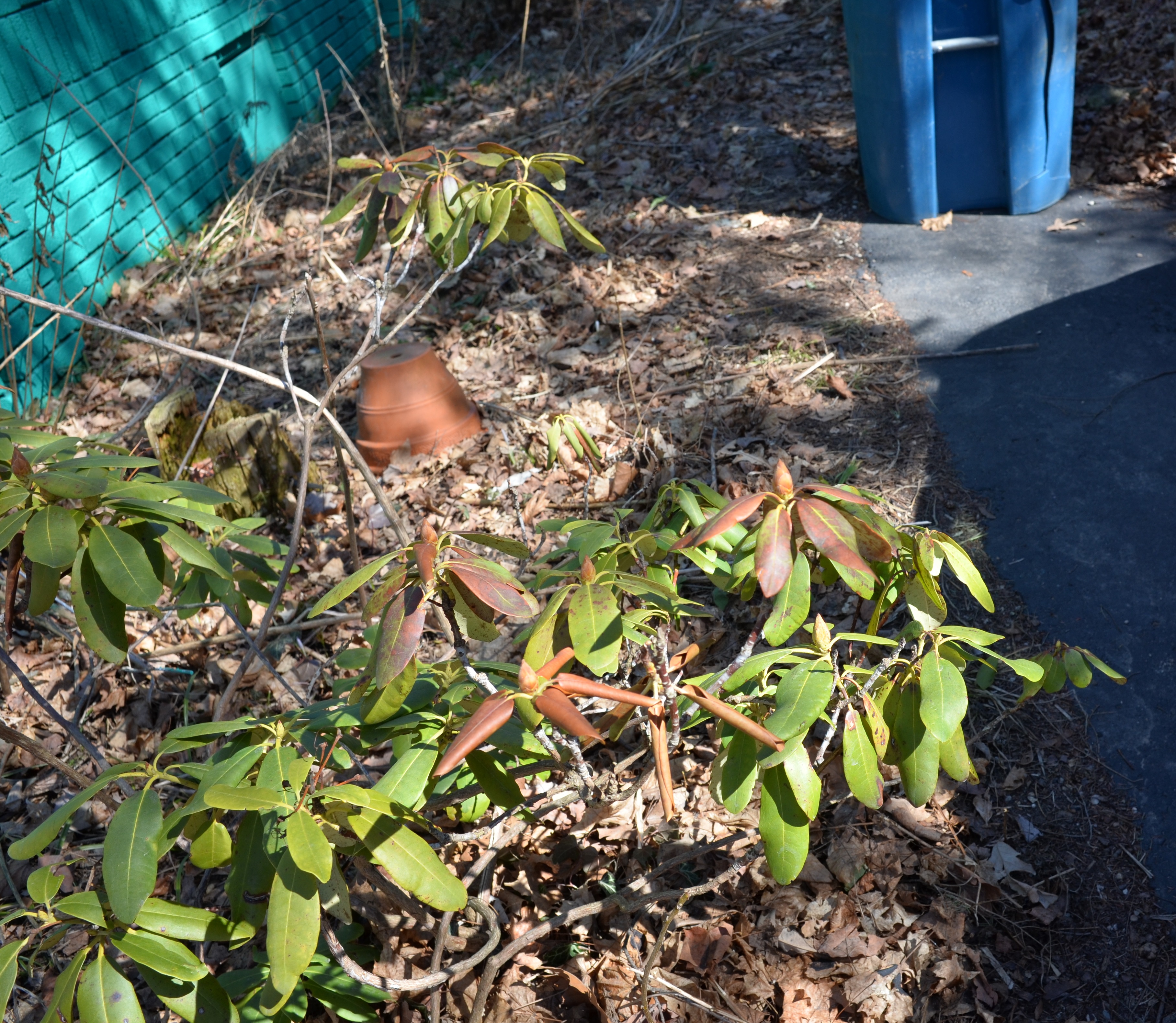
On the "bug" front, here is a quiz: Is the yellow round thing in the crevice a spider, a rock or an acorn hidden by
squirrels? For comparison, here is a repeat picture from the late fall blogs 2014: an orb-weaving spider, just
about the size and shape of the mystery object.
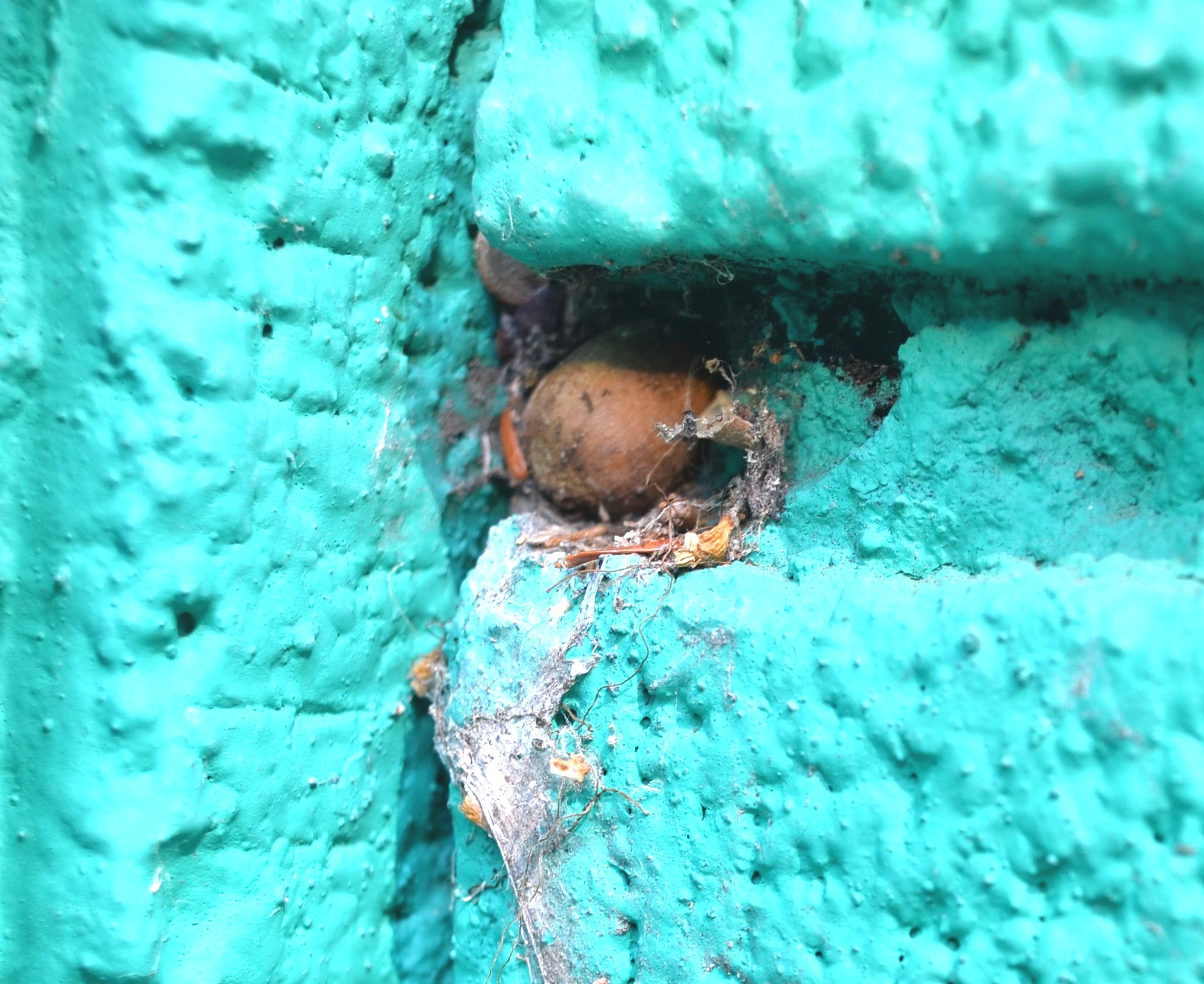
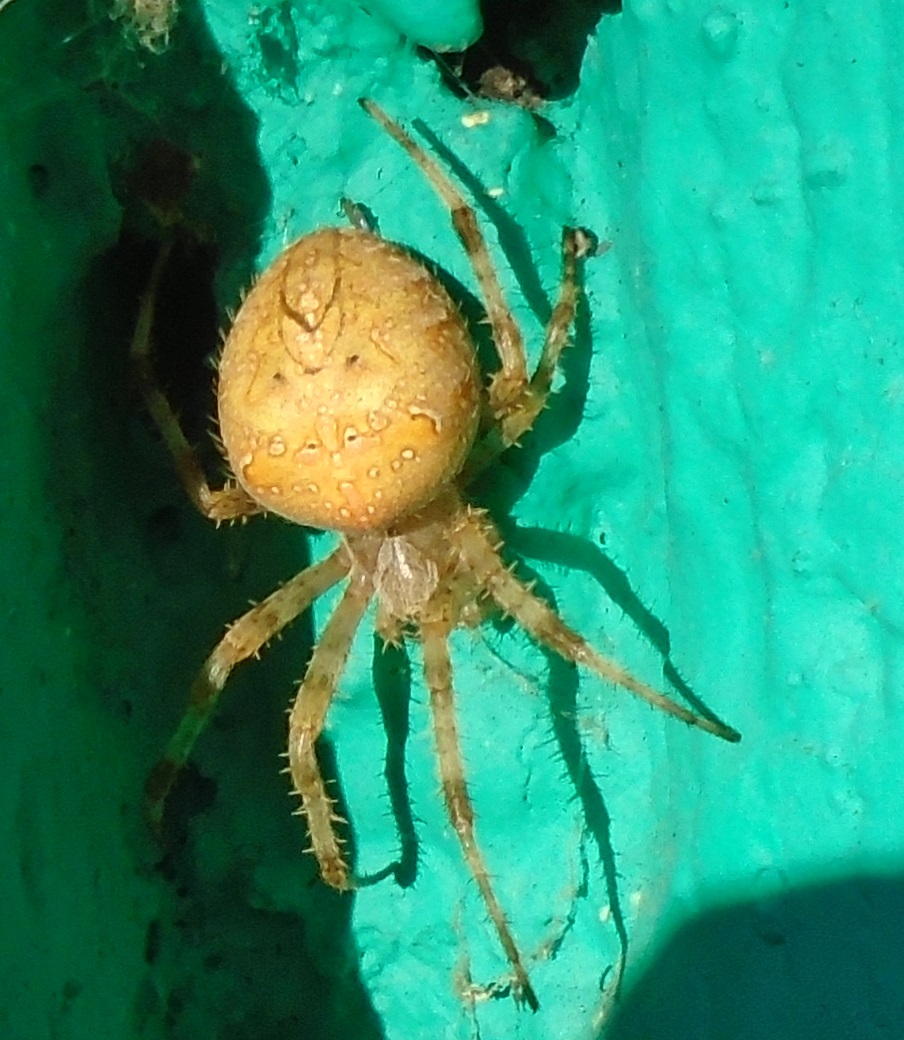
This lovely white shell belongs or belonged to one of the imported European snails, just the size of a
nice escargot. Trouble with them is you can't just pop them into the steam and then into the butter and garlic. They
have been passing dirt through their systems. You would have to feed them on cornmeal for a month or so to detoxify
them. They are lovely but probably not appetizing.
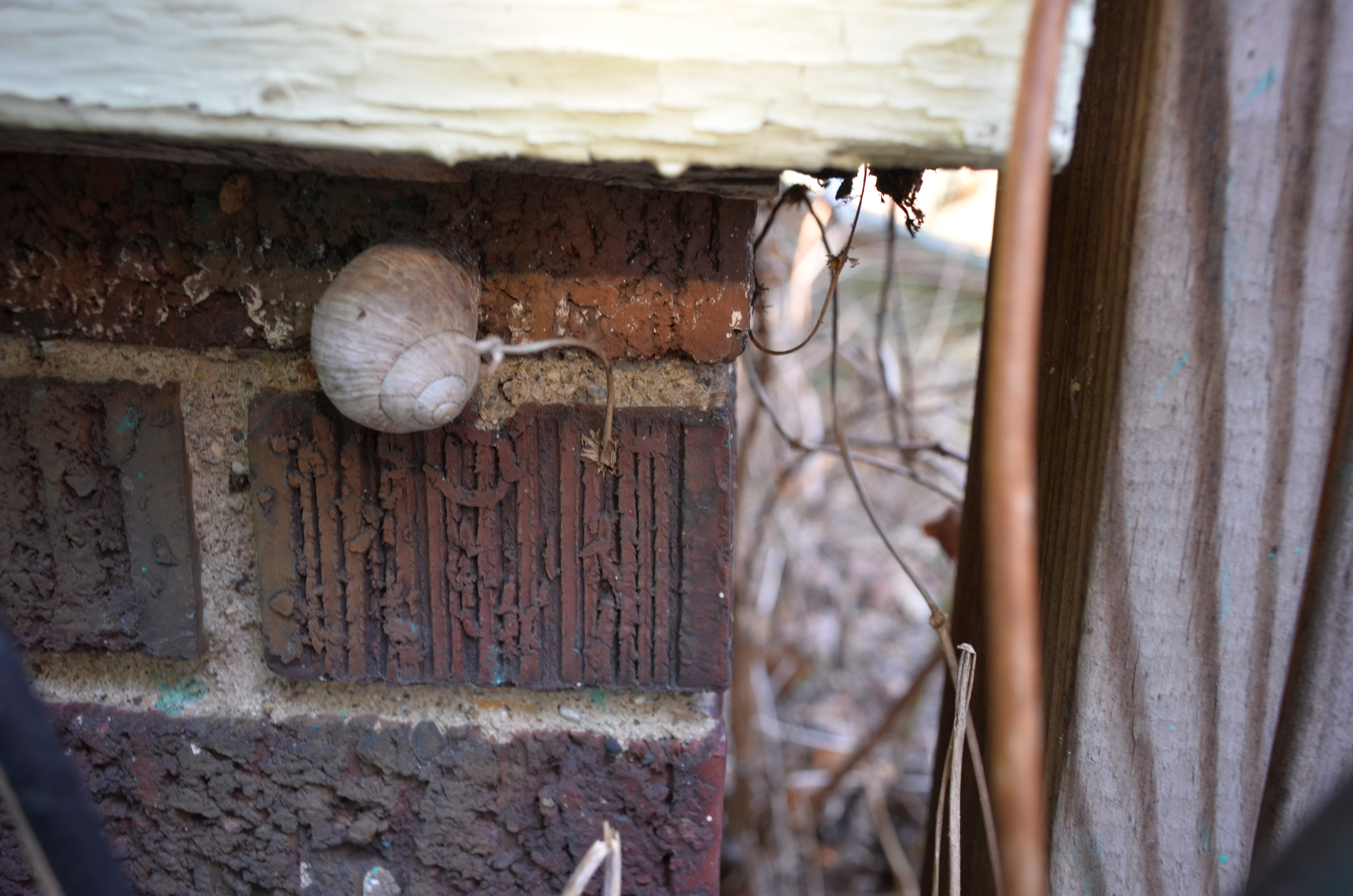
I am trying to design nice inlay patterns which will celebrate some of the world's most stunning butterflies
and moths. Here is a male attacus atlas moth from Java which I just set. They come folded in a paper triangle,
and you have to soften them up in a jar with a layer of wet paper toweling covered by a layer of waxed paper.
The moisture permeates the joints so that you can then open up the moth and spread the wings for mounting. I wanted
a real moth to use as an inspiration for a wooden inlay "picture" to be used as a panel for a box or a table top or just
for hanging.
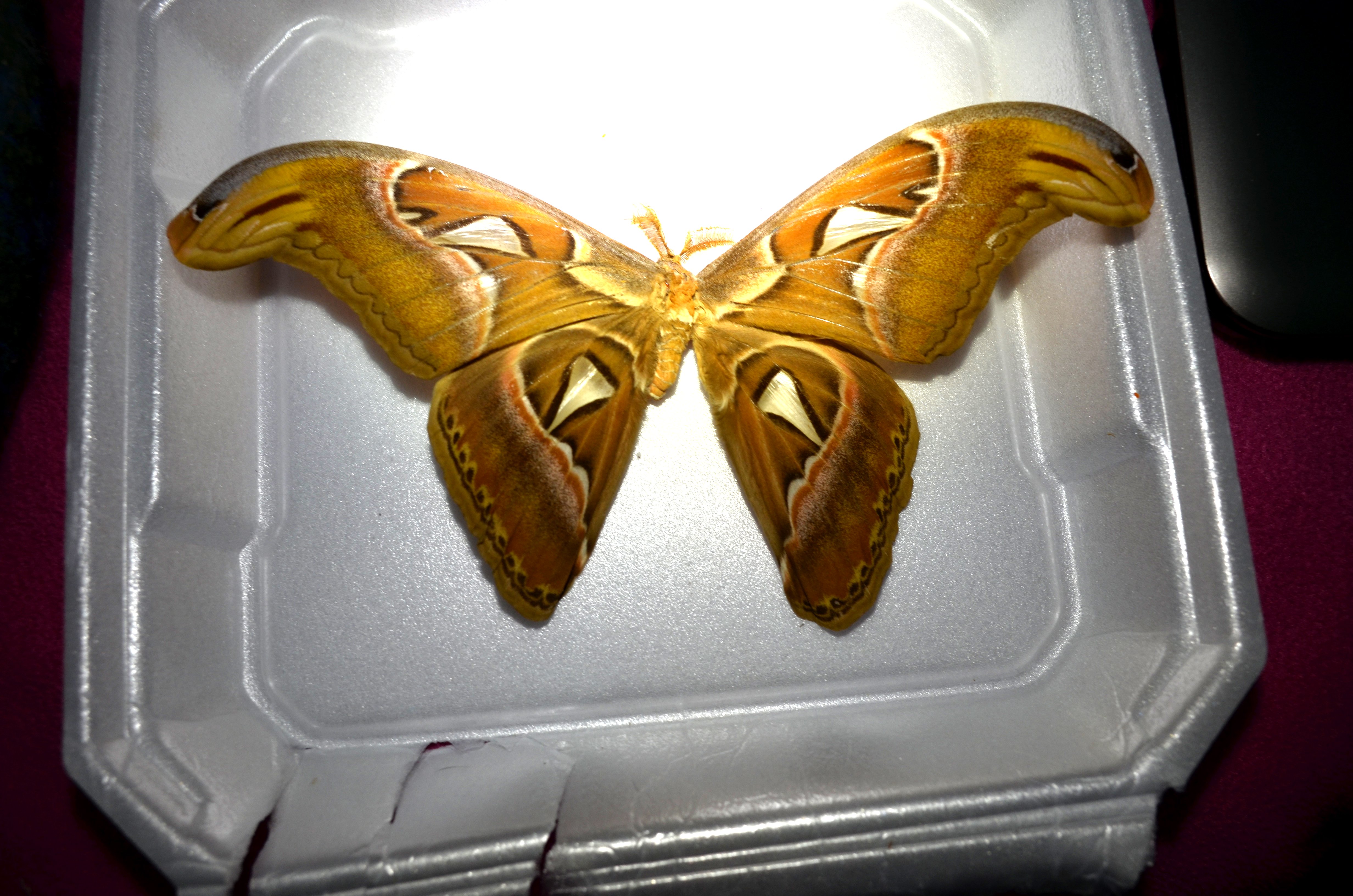
Back to March 17
On to April 1
Back to 2015 menu
Back to main menu











